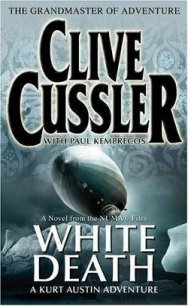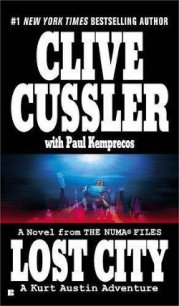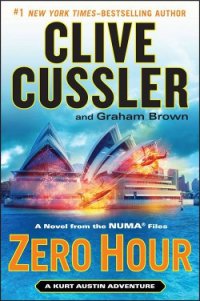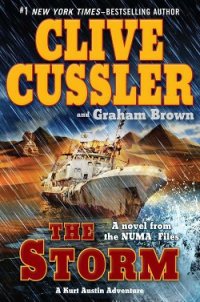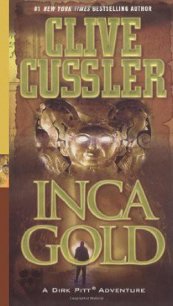The Navigator - Cussler Clive (читаем книги онлайн бесплатно полностью .TXT) 📗
Austin wondered why geniuses tended to be eccentric when it came to hair. Einstein. Beethoven. Mark Twain. Superman’s nemesis Lex Luthor. NUMA’s bearded computer whiz, Hiram Yeager. Wilmut, a plumpish man in his forties, affected a double comb-over parted just above the ears.
Austin came up behind Wilmut and in his deepest voice said, “Greetings, O all-seeing Sauron.”
Wilmut spun around in his chair and grinned with delight.
“Greetings, Mortal. I was expecting you.”
“The Eye of Sauron sees all, knows all,” Austin said.
“Hell, no,” Wilmut replied. “I got your e-mail and pictures from Turkey. Pull up a seat and tell me how I can help.”
Austin plunked down in a swivel chair. “The photos show plaster casts made from the markings on an ancient statue. I think the squiggly lines are the contours of a map. Possibly a location on the East Coast. I wondered if the map could be compared to satellite photos.”
In answer, Wilmut clicked the computer mouse. The picture Austin had taken of the Navigator’s cat appeared within a rectangle. The image was sharper than on the original photo. “I’ve enhanced the picture,” Wilmut explained. “Got rid of the gray areas, fuzzy edges, and miscellaneous garbage. The borders help in the visualization.”
Austin tapped the screen with his forefinger. “This symbol may denote a sunken ship. The problem is, I don’t know if that square is one mile across. Or ten. Or even a hundred.”
“The image is similar to a fingerprint,” Wilmut said. “Prints are matched according to ridge characteristics called Galton details, points of identity or minutiae. You ID prints by comparing minutiae points. Ridge characteristics. Islands. Bifurcation. I’ve created an algorithm that will match the points on the primitive map with satellite photos. I’ll have the NUMASat computer look at each one of those possibilities. It will take a little while.”
Austin told Wilmut he would be in conference but to call when he had some news, and took the elevator down to another floor. He met Zavala in the hallway and they walked to the conference room together. The walls were hung with pictures of sailing ships. The centerpiece was a long oak conference table that seemed to float like a ship at sea on the thick blue carpet.
The Trouts sat at the table with a serious-faced young woman Austin assumed was Angela Worth. Angela was still in something of a state of shock. In the space of a few hours, she had met the Trouts, her boss had been murdered, and an attempt made on her life. She was still reeling from those events when she was drawn into the very heart of NUMA, an agency whose exploits she had only heard about.
Then the door opened, and the two men who came into the room could have stepped out of an adventure novel. The husky man with the piercing blue-green eyes and strange pale hair came over and introduced himself and his darkly handsome friend. She was practically speechless.
They sat at the table and Paul handed them copies of the computer-generated ship of Tarshish. “We think this is the type of vessel that would have sailed to North America. We didn’t get far on the transatlantic route, so we tried another avenue. We noticed a series of connections to the Philosophical Society and followed it up. That’s when we met Angela.”
“Congratulations on finding the Jefferson file,” Austin said with a friendly grin that put her at ease.
“Thank you,” Angela said. “It was dumb luck, really.”
“Angela has had more dumb luck,” Gamay said. “Please tell Kurt and Joe what else you’ve found.”
“We think that Meriwether Lewis was murdered to stop him from bringing some vital information to Thomas Jefferson.”
“I’d be interested in how you reached that conclusion,” Austin said.
Angela pulled a file folder out of a battered leather briefcase.
“I dug into the files looking for information on Lewis’s slave, a young man named Zeb. The records show that he arrived at Monticello several weeks after Lewis died. It’s possible he had gone along with a man called Neelly, who traveled to Monticello with news of Lewis’s death. Neelly would have needed help with Lewis’s belongings and brought along the slave. I wondered what became of Zeb after that.”
“In those days the slave would have been considered part of Lewis’s estate,” Austin said.
“That’s what I thought. He would have been delivered with other property to Lewis’s family. On a hunch, I went through Monticello’s slave population. I found something quite fascinating.”
She handed Austin a sheet of paper with the names of slaves, their sex, age, and job. Austin perused the roster and passed it along to the table without comment.
Gamay said, “Zeb is listed as a freeman. He was assigned to the house.”
“How did he become free at age eighteen?” Austin said.
“I think it was a reward,” Angela suggested.
“That makes sense,” Austin said. “It was Jefferson’s way of thanking the young man for a service he had performed.”
“The Lewis material,” Gamay said. “I’ll bet he delivered the goods to Jefferson.”
“Do you know what happened to him?” Austin asked Angela.
“He stayed at Monticello, working in a prize position inside the house. He vanished from the roster years later, but that’s not the end of the story.”
She produced a copy of an old newspaper clipping.
Gamay read the clipping. “Our freeman?”
“It says he worked for President Jefferson,” Angela said.
Gamay passed the clipping to Paul. “This is dynamite. He’s in his nineties, and was interviewed shortly before he died. On his deathbed, he says flat out that Meriwether Lewis was murdered.”
“What are the chances he told Jefferson the same thing?” Austin said.
Paul said, “We think Jefferson knew it was murder all the time but pushed the suicide story, even though it diminished the reputation of his old friend.”
“Jefferson was not above chicanery, but he must have had a good reason,” Austin said.
Paul picked up the ship rendering. “We think he didn’t want to call attention to the fact that he knew about this.”
“I think our next step is clear,” Gamay said. “A trip to Monticello to see if we can learn more about young Zeb.”
Austin was about to say he agreed with the suggestion when he excused himself to answer a phone call. It was Wilmut.
“I’ve got it,” Wilmut’s excited voice said.
“You’ve found the ship’s position?”
“Even better, Kurt. I’ve found the ship.”
Chapter 36
AUSTIN STOOD ON THE DECK of his catboat and gazed out at Chesapeake Bay. The bay was familiar territory to Austin. He had gunkholed nearly every cove and inlet on both shores in the twenty-four-foot-long shallow-draft sailboat he had restored. Despite its wide beam, the catboat was surprisingly fast and maneuverable, living up to its reputation to come about as “quick as a cat.” Austin had a penchant for speed, and liked nothing better than sailing tight to the wind with the big gaff-rigged sail close-hauled in a brisk breeze.
But not today. Austin climbed out of the sailboat and walked back to the parking lot. He helped Zavala unload their bags from the Jeep. After the meeting at NUMA, they had picked up some gear and drove to the boatyard south of Annapolis. Austin had called ahead to arrange with the boatyard manager for the loan of a twenty-foot fiberglass powerboat.
Zavala carried the duffel bags that held their scuba gear. Austin took charge of two plastic cases. They hauled the equipment out onto the slip dock and stowed their gear on board the powerboat. Then they cast off the lines and headed south into the bay. Zavala manned the wheel. Austin consulted the chart and handheld GPS.
Chesapeake Bay is the largest estuary in the United States, stretching two hundred miles long from Havre de Grace, Maryland, where the Susquehanna River empties into the bay, to Norfolk, Virginia. The bay ranges in width from about thirty-five miles wide near the mouth of the Potomac River to less than four miles near Aberdeen in Maryland.
